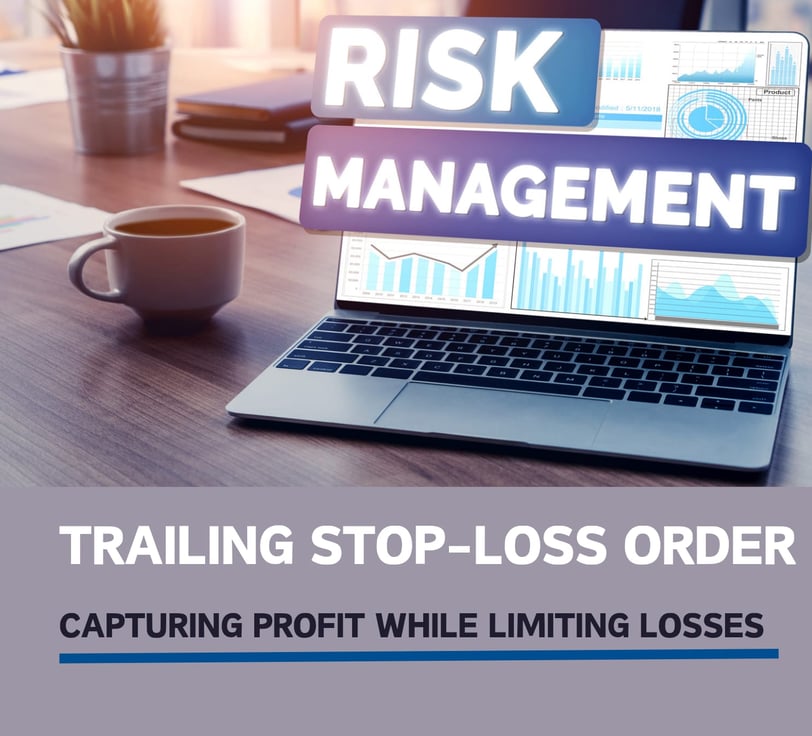How to Use Trailing Stop-Loss Orders to Protect Profits and Manage Risk
Learn how trailing stop-loss orders can help you protect profits, limit losses, and manage risk in the stock market. Discover practical tips and real-world examples for effective use.
BEGINNERS GUIDE
9/2/20242 min read


Introduction
Trailing stop-loss orders are a powerful tool for managing risk in your investments. By automatically adjusting your stop-loss price as the stock price rises, they can help you protect your profits while limiting potential losses. In this blog post, we'll explore the benefits of trailing stop-loss orders, how they work, and practical tips for using them effectively.
Understanding Trailing Stop-Loss Orders
A trailing stop-loss order is a type of conditional order that automatically sells your position if the stock price falls below a specified level. Unlike a traditional stop-loss order, a trailing stop-loss order adjusts its price as the stock price rises, capturing potential profits while limiting downside risk.
Benefits of Trailing Stop-Loss Orders
Protect Profits: Trailing stop-loss orders can help you lock in profits as the stock price rises.
Limit Losses: If the stock price starts to decline, the trailing stop-loss will activate, helping you exit the position before your losses become too significant.
Reduce Emotional Trading: Trailing stop-loss orders can help you avoid emotional decision-making, such as selling out of fear or greed.
Flexibility: You can adjust the trailing percentage to suit your risk tolerance and investment strategy.
How Trailing Stop-Loss Orders Work
To set a trailing stop-loss order, you specify a percentage below the current market price. As the stock price rises, the stop-loss level will adjust accordingly. For example, if you set a trailing stop-loss of 5%, the stop-loss price will be 5% below the highest price reached by the stock. If the stock price falls below the trailing stop-loss level, your order will be executed.
Practical Tips for Using Trailing Stop-Loss Orders
Choose the Right Percentage: The trailing percentage should be based on your risk tolerance and the volatility of the stock. A higher percentage can provide more protection, but it may also limit your potential profits.
Consider Your Investment Horizon: If you have a long-term investment horizon, you may want to use a wider trailing percentage to capture more upside potential.
Monitor Your Position: Regularly review your trailing stop-loss order to ensure it aligns with your investment strategy.
Use in Combination with Other Tools: Trailing stop-loss orders can be used in combination with other risk management techniques, such as diversification and fundamental analysis.
Real-Life Example
Imagine you purchase a stock at 1000 per share. You set a trailing stop-loss of 10%. As the stock price rises to 1100, your trailing stop-loss level will automatically adjust to 900. If the stock price then declines to 900 below, your stop-loss order will be triggered, and you will sell your shares at around 900.
Conclusion
Trailing stop-loss orders can be a valuable tool for managing risk and protecting your profits in the stock market. By understanding how they work and using them effectively, you can increase your chances of long-term investment success.
Thank You
Prabhav Maheshwari
© 2024. All rights reserved.
EASE INVESTOR
